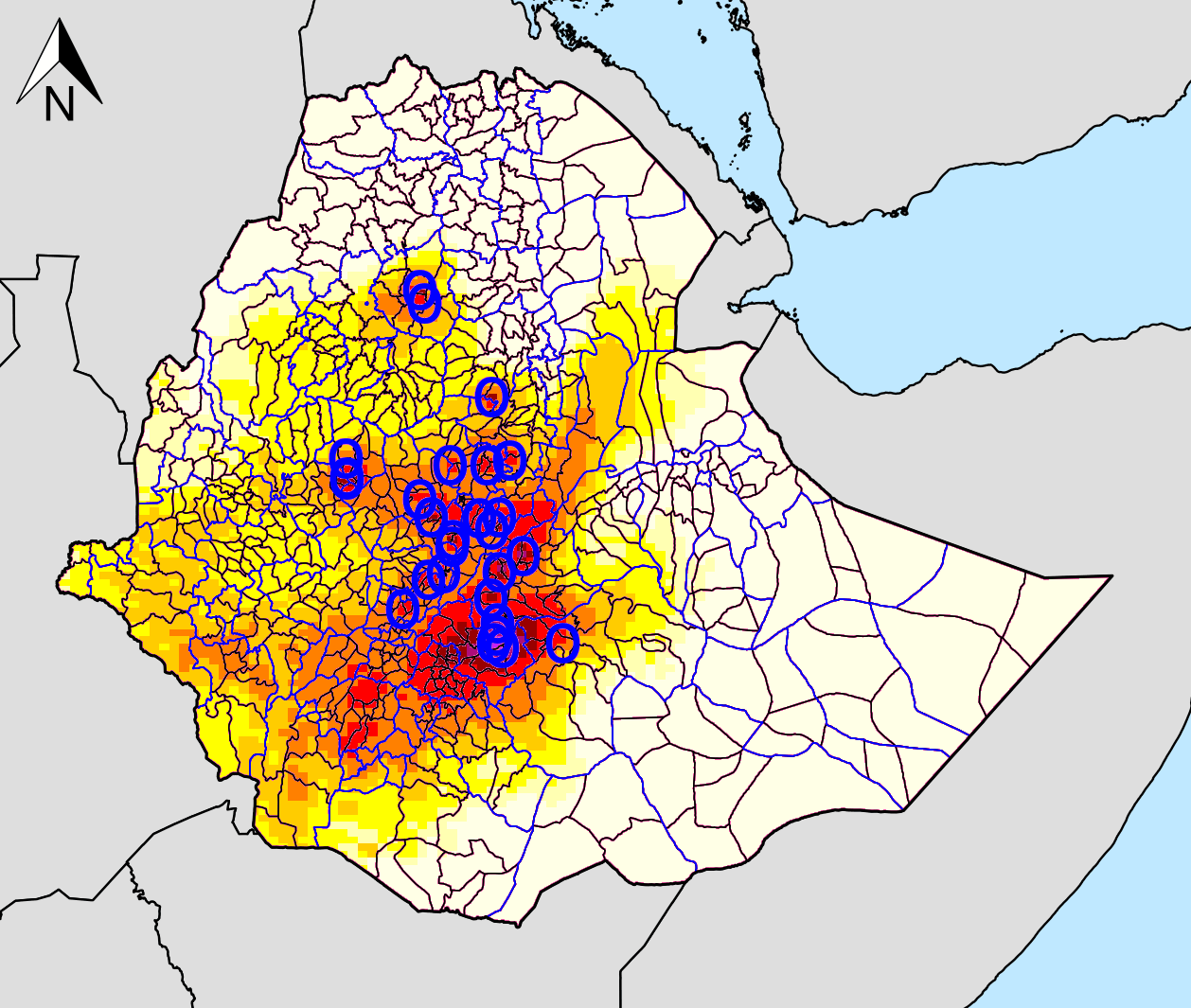Scientists develop an early warning system that delivers wheat rust predictions directly to farmers’ phones
- From
-
Published on
04.11.19
- Impact Area
-
Funders
DFID, Gates Foundation

Using field and mobile phone surveillance data together with forecasts for spore dispersal and environmental suitability for disease, an international team of scientists has developed an early warning system which can predict wheat rust diseases in Ethiopia. The cross-disciplinary project draws on expertise from biology, meteorology, agronomy, computer science and telecommunications.
Reported this week in Environmental Research Letters, the new early warning system, the first of its kind to be implemented in a developing country, will allow policy makers and farmers all over Ethiopia to gauge the current situation and forecast wheat rust up to a week in advance.
The system was developed by the University of Cambridge, the UK Met Office, the Ethiopian Institute of Agricultural Research (EIAR), the Ethiopian Agricultural Transformation Agency (ATA) and the International Maize and Wheat Improvement Center (CIMMYT). It works by taking near real-time information from wheat rust surveys carried out by EIAR, regional research centers and CIMMYT using a smartphone app called Open Data Kit (ODK).
Related news
-

Australia partners with International Livestock Research Institute to upskill researchers from Africa and Asia
International Livestock Research Institute (ILRI)13.11.25-
Food security
-
Poverty reduction, livelihoods & jobs
Australia has joined forces with the International Livestock Research Institute (ILRI) to support th…
Read more -
-

Next-gen rice lines top check varieties at 7.5 t/ha in ESA
International Rice Research Institute (IRRI)11.11.25-
Food security
MOROGORO, Tanzania (8 October 2025) — Elite rice lines are outperforming the current popular varie…
Read more -
-

QTL Profiling Now Live on EBS
International Rice Research Institute (IRRI)11.11.25-
Food security
QTL profiling is now integrated into the EBS Platform’s MDA module. Teams across CGIAR research…
Read more -
